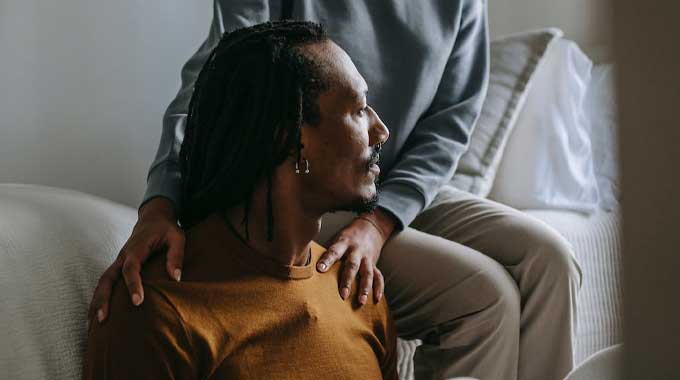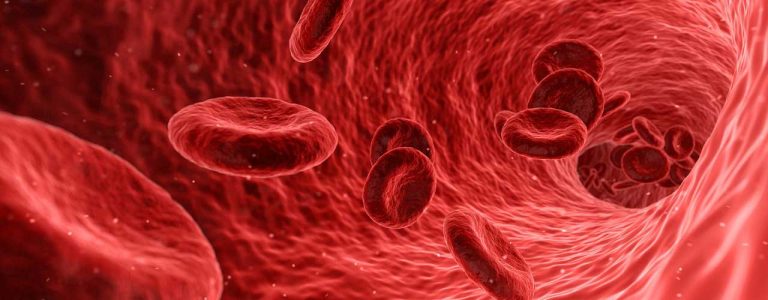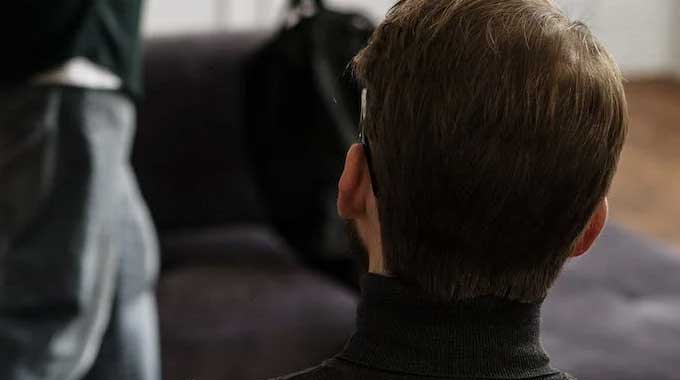Do you encounter more down days than usual when the days get darker? Perhaps you find it difficult to wake up in the mornings and have a complete lack of energy in the winter months. If this sounds like you, you may be experiencing seasonal affective disorder (SAD), a type of depression that is caused by changes in weather and sunlight.
If you experience intense winter blues, it may be time to speak to a mental health professional. In the meantime, educating yourself about the disorder, its symptoms, and different self-help tips can aid you in controlling some of the effects.
What Is Seasonal Affective Disorder (SAD)?
Seasonal affective disorder (SAD) is a form of depression that follows a seasonal pattern that typically begins in the fall and can last right up until the spring. As the days get colder and shorter, the darkness and lack of sunlight can cause you to feel low in energy, and sad, with noticeable changes in eating and sleeping habits.
You may even feel like a different person compared to the summer, experiencing feelings of sadness, hopelessness, or stress. This can begin to take its toll on various aspects of your life, from interpersonal relationships to school or work.
It’s natural to experience down days in the colder months, often referred to as the winter blues. But unlike this, seasonal depression affects your day-to-day living, including how you think, feel and experience things. Around 5% of adults in the United States experience seasonal depression at some point in their lives, particularly women, although the reasons why are unknown.
There are two types of seasonal affective disorder (SAD): summer and winter depression. The most common type is fall onset SAD, or winter SAD, but there is another form of seasonal affective disorder known as summer depression. This is triggered by longer days and increased heat. The seasonal changes in late spring and late fall can cause one to experience similar symptoms to depression.
Causes
Although there is not one exact cause for seasonal depression, there is a multitude of theories, the majority suggesting that the disorder is due to the reduction in sunlight and shorter days. Seasonal affective disorder (SAD) has been linked to an imbalance of biochemicals in the brain, specifically serotonin, a neurotransmitter associated with mood regulation. A lack of sunlight and therefore a deficit in serotonin can lead to depression symptoms.
The body’s internal clock responds to the changes between light and dark and helps regulate mood, appetite, and sleep patterns. The shorter days and longer nights change our biological clock and can leave you feeling disorientated, groggy and sleepy at different times throughout the day.
Melatonin is an additional chemical that affects your mood and sleep patterns. A lack of sunlight has also been associated with an increase in melatonin an additional chemical affecting your mood and sleep. This can cause you to feel sleepy and slugging during the darker day.
Symptoms
The different symptoms of seasonal affective disorder (SAD) may appear similar to other mental health conditions, especially as it is officially classified as a form of major depressive disorder. Common symptoms and mood changes of depression include:
- Intense sadness
- Anxiety
- Weight gain or loss
- Changes in sleep patterns, such as trouble sleeping or sleeping too much
- Lack of energy
- Trouble concentrating
- Feeling agitated or irritated
Diagnosis
Mental health professionals can find it difficult to diagnose seasonal affective disorder as the symptoms are similar to those of other forms of depression. However, depressive episodes that occur during the season need to outnumber the experience of depressive episodes outside of the specific season.
5 Top Tips to Ease Seasonal Depression
You may not be able to prevent seasonal affective disorder, but you can learn to effectively manage your symptoms so they no longer interfere with your day-to-day life.
Be Active
Regular exercise has been found alleviate symptoms of various forms of depression. If you exercise regularly you will experience a boost in endorphins, serotonin, and other feel-good chemicals found in the brain. Research has found that exercise can improve treatment outcomes in depressed patients.
Eat the Right Foods
Eating well-balanced meals throughout the day can help minimize mood swings and keep energy levels up. Eating certain foods that are rich in omega-3 fats can help improve your moods, such as fish, walnuts, and soybeans while steering clear of processed and sugary foods can also be beneficial in reducing depression symptoms.
Get Natural Sunlight and Vitamin D
Seasonal depression can make it difficult to motivate yourself to do things that will benefit you. By slowly adopting healthier habits and introducing relaxation into your day, you can help speed your recovery process. Exposure to natural outdoor light can help improve your mood by boosting serotonin levels. Research has found that low levels of Vitamin D are common in people with SAD. Although there is no concrete evidence suggesting Vitamin D supplements can help relieve symptoms.
Stay Social
Having a strong support network is important to reduce isolation and ensure you have support in managing your SAD. It can sometimes be difficult to participate in social activities, but being around others can help boost your mood and improve your overall mental health.
Stick to a Schedule
Maintaining a regular sleeping schedule can help improve your sleep, a key symptom of seasonal depression. It also helps to ensure that you are exposed to sunlight at predictable and consistent times.
Treatment for SAD
A treatment plan for seasonal affective disorder may include psychotherapy, light therapy, and medications.
Light Therapy
Light therapy, also referred to as phototherapy, exposes you to a light box at the beginning of each of your days. Bright light therapy imitates natural outdoor light and has been found to cause changes in chemicals within the brain that are linked to mood. Daily exposure to light therapy can also decrease the brain’s production of melatonin, making you feel more alert and awake.
Light therapy is a typical first line of treatment for SAD and research has found a noticeable decrease in depressive symptoms after a few days to a few weeks of treatment. Light therapy has been proven to be effective in treating SAD symptoms in around 85% of patients. There are two methods of administrating light therapy, a lightbox or a dawn simulator.
A light box can deliver a bright light that can be up to ten times the intensity of typical domestic lighting. You do not need a prescription to buy a light box, but it is always best to consult with a mental health professional.
Alternatively, a dawn stimulator can slowly increase the light in your room to reenact the sun rising to wake you up. The light gradually increases for around 30 to 45 minutes. This can help improve your mood by resetting your circadian rhythm.
Psychotherapy
Seasonal affective disorder can also be treated using psychotherapy, known as talk therapy. Cognitive behavioral therapy is utilized by many mental health professionals and has been found to be effective in reducing symptoms of depression, anxiety, and other mood disorders.
The form of treatment teaches you to identify and challenge negative thoughts and behaviors that may be contributing to your depressed mood.
Medication
If symptoms of seasonal affective disorder are severe, antidepressant medication may be prescribed to help treat SAD.
Selective serotonin reuptake inhibitors (SSRIs) work by increasing the levels of serotonin within the brain, therefore can aid in reducing SAD symptoms.
The FDA has approved bupropion to effectively treat seasonal affective disorder (SAD). An extended-release version of the medication may be prescribed to help prevent depressive episodes.
It is important to note that medications have a series of side effects and it can take up to several weeks to experience the benefits of antidepressants. Additionally, you may have to try a range of medications before finding the one best suited to you.
Treatment at Cornerstone
Cornerstone is a premier mental health center located in Orange County. We offer an enriching experience that aims to heal the entire person. We utilize evidence-based approaches that are adapted to your unique needs, including but not limited to:
- Cognitive behavioral therapy
- Person-centered therapy
- Emotion-focused therapy
- Interpersonal therapy
- Psychoeducation
The various treatments will be delivered by our team of highly skilled experts who have years of experience in treating patients with compassion, care, and kindness. From detox to primary rehabilitation to our extended care program and outpatient treatment, we are able to support our clients to heal their bodies, minds, and spirits.
If you believe you or a loved one is living with an addiction and co-occurring disorder, such as seasonal affective disorder, then contact us today to see how we can help you.









